Today, in honor of National Women’s History Month, we harken back to the 1970s, ’80s and ’90s to recognize the pivotal role of women in the early decades of the Utah wilderness movement. In the interest of brevity, we have chosen to highlight just a few of the remarkable and dedicated women who helped build and define that movement–each playing a crucial part in advancing the Utah Wilderness Coalition wilderness proposal, known today as America’s Red Rock Wilderness Act.
We recognize that for every person named in this article, there is an army of people behind them who held the line for Utah wilderness over the years, playing different but equally important roles to keep the deserts and mountains of Utah in their wild and natural state. We are deeply grateful to each and every one of them.
Featured Profiles
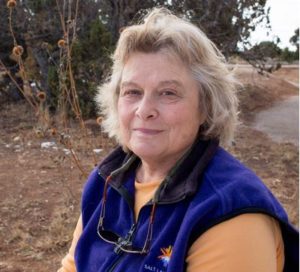 Janet Ross
Janet Ross
It’s June 12, 1979 and Janet Ross is being dropped off by helicopter to inventory remote public lands under the Bureau of Land Management’s (BLM) purview. Janet works as an employee at the BLM field office in Monticello, Utah, and has been directed to inventory the entirety of the Mancos Mesa region in just one day. Rising to elevations of between 5,000 and 6,000 feet, Mancos Mesa is an island in the sky embossed on the surrounded landscape by imposing cliffs. The top of the mesa is a mosaic of bare rock, sand, and sage. Its surface is incised with more than 200 miles of winding canyons.
The helicopter dropped each of three inventory crew members at two different locations on Mancos Mesa. “We took pictures for five or ten minutes at each location,” recalls Janet Ross. “That was the entire inventory.” Several weeks later, Janet and her inventory team filed their report on the wilderness character of Mancos Mesa. They unanimously agreed the region qualified for wilderness study.
Their wilderness study area (WSA) recommendations were quietly reversed by the Utah BLM State Director and Mancos Mesa was not established as a WSA, along with 90 percent of Utah wild lands inventoried by November 1980. (Read this chapter on the BLM Wilderness Review for more of Janet’s story on Mancos Mesa.)
Deeply disillusioned with the BLM’s inventory process, Janet went on to become a founding member of SUWA’s board, where she served until 2002. In 1984, she launched the Four Corners School of Outdoor Education in Monticello, Utah, which later expanded into the 48-acre Canyon Country Discovery Center, completed in 2016. She was the Center’s executive director until 2017.
Her on-the-ground knowledge of the BLM’s Utah wilderness inventory gave Janet the credibility to critique it, and to provide the same credibility and guidance needed for the people’s inventory. That effort still serves today as the basis for America’s Red Rock Wilderness Act.
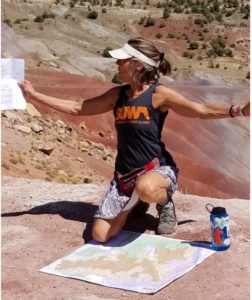 Terri Martin
Terri Martin
The wind blows through the backseat window of the VW beetle as Terri Martin hitches a ride to her new job as a lifeguard for the National Park Service on Lake Powell. As driver and passenger crest a pass, the land spreads out before them, the massive mesas of the Colorado River basin falling away to a distant horizon in cascading silhouettes of blue. The beauty of the landscape is astonishing. The awe-struck driver turns to Terri and ask, “You’re going to work here?” Terri says quietly, “I’m going to live here.” It’s June of 1973.
Terri’s Utah wilderness activism was born out of love-at-first-sight. Later, when she worked seasonally for the BLM in the agency’s Cedar City office, she did what she could to reveal the corrupt nature of the wilderness inventory. In the summer of 1980 she oh-so-surreptitiously called a local activist, Patricia (Pat) Heidenreich, to tell her when the BLM staffers had draft wilderness inventory maps spread out on a field office table. Pat would casually drop by the office to cross-examine local BLM staff about what they were planning for wilderness study area designation—information that the BLM was reticent to share.
Terri listened to frustrated BLM staff talk about how their efforts to complete an honest inventory were stymied by the local district manager at the Cedar City BLM office, Morgan Jensen. Reportedly, he called in the team of BLM employees who were going to work on the public land inventory and basically laid out how much wilderness they would find and where, before the inventory even started. As a group, the employees told him they couldn’t do that: there were regulations, there were criteria, they needed to go out and do an honest inventory.
So Jensen called them into his office individually and leaned on them to limit Wilderness Study Area (WSA) recommendations. As their boss, he had some influence over their future at the agency. All but one of them held their ground. This resulted in inventory reports which claimed that many wilderness-quality areas did not meet the WSA criteria because they lacked “opportunities for solitude or primitive and unconfined recreation.”
Like Janet, Terri went on to fight for the protection of Utah’s deserving public lands. She worked for the National Parks Conservation Association from 1984-1996 as their Rocky Mountain regional director. Terri was part of the initial meetings of the nonprofit conservation organizations that would become the Utah Wilderness Coalition. She was a strong believer that the budding Utah wilderness movement needed to stand together as a coalition and craft a common proposal for wilderness designation in Utah. That proposal became a reality, and would eventually be introduced in Congress as America’s Red Rock Wilderness Act.
Terri is currently the Intermountain grassroots organizer at SUWA, where she has worked since 2008. One of her first tasks was coordinating the Women Protecting Wilderness project, which sought to elevate women’s voices in the campaign to protect Utah’s redrock country. Today, on top of everything else she juggles, Terri works to educate decision makers and the public on the role Utah’s redrock wilderness can play in protecting 30% of U.S. lands and waters, address climate change, and mitigate the biodiversity crisis.
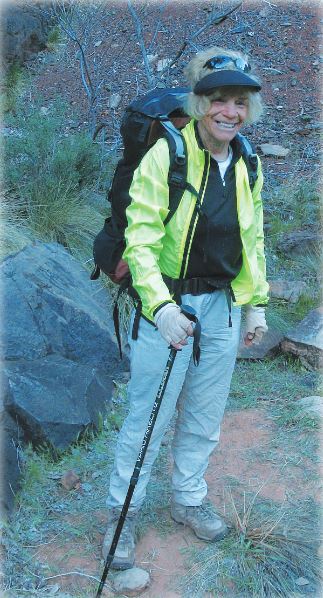 Ginger Harmon
Ginger Harmon
Ginger is known to many as an intrepid traveler who has trekked in places around the globe, from southern Utah to Nepal to Italy’s Via di Francesco. An early and vocal opponent of harmful grazing practices in the Escalante area, she served on the SUWA board and advisory committee through the 1990s, offering sage business advice and a detailed knowledge of Utah’s redrock country gained from extensive backcountry exploration.
According to the Tucson Times:
Harmon recalls coming out of the canyons of the Escalante in Southern Utah after a long, strenuous backpacking trip in the mid-’90s to learn that while they’d been recreating, Sen. Orrin Hatch had said that wilderness status for the Escalante was a bad idea because it would deprive the elderly of access to the area. Harmon and her friends decided to put themselves forward as a living refutation of his argument.
“Don’t blame roads on us, was our message,” she says.
And that’s how Great Old Broads for Wilderness was born. Ginger is an original founder of the national grassroots organization, led by feisty and fearless women, that inspires activists to preserve and defend our wild public lands.
Ginger recently turned 91 years young! Those of us at SUWA today are honored to follow in her passionate and determined footsteps.
More Fabulous Women Who Helped Build the Movement
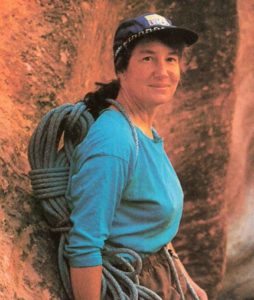 Del Smith: Del is perhaps best known as a pioneer of outdoor leadership and Leave No Trace education in the West. An expert outdoorswoman and former backpacking instructor at NOLS, she was also one of the first Zion National Park bus drivers and an original employee of SUWA when our headquarters were located in southern Utah. She later joined the SUWA board, where she served into the mid-1990s.
Del Smith: Del is perhaps best known as a pioneer of outdoor leadership and Leave No Trace education in the West. An expert outdoorswoman and former backpacking instructor at NOLS, she was also one of the first Zion National Park bus drivers and an original employee of SUWA when our headquarters were located in southern Utah. She later joined the SUWA board, where she served into the mid-1990s.
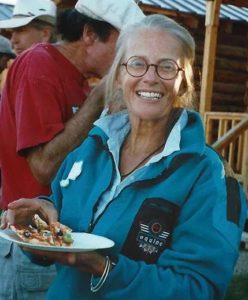 Susan Tixier: In addition to serving as SUWA’s associate director from 1990-1994 (during which time she laid the groundwork for our fundraising efforts), Susan co-founded Great Old Broads for Wilderness in 1989 and served as their executive director through 2000. Under her leadership, the organization lobbied in Washington, DC to remind legislators that wilderness renews the human spirit and preserves humanity. But this was just the tip of the iceberg. An exuberantly daring and visionary thinker, she also led or helped kickstart multiple other organizations that still serve America’s wild places, including WildEarth Guardians, Conservation Colorado, Western Lands Advocates, and the New Mexico Environmental Legal Center. Anyone who cares about western public lands owes a huge debt of gratitude to Susan’s prodigious movement-building talents. Sadly, she passed away in 2015, but her legacy lives on.
Susan Tixier: In addition to serving as SUWA’s associate director from 1990-1994 (during which time she laid the groundwork for our fundraising efforts), Susan co-founded Great Old Broads for Wilderness in 1989 and served as their executive director through 2000. Under her leadership, the organization lobbied in Washington, DC to remind legislators that wilderness renews the human spirit and preserves humanity. But this was just the tip of the iceberg. An exuberantly daring and visionary thinker, she also led or helped kickstart multiple other organizations that still serve America’s wild places, including WildEarth Guardians, Conservation Colorado, Western Lands Advocates, and the New Mexico Environmental Legal Center. Anyone who cares about western public lands owes a huge debt of gratitude to Susan’s prodigious movement-building talents. Sadly, she passed away in 2015, but her legacy lives on.
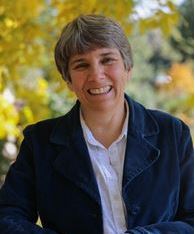 Amy O’Connor: In the 1980s, Amy took on the daunting task of co-authoring and editing Wilderness at the Edge, a 400-page book (still a classic) detailing the original people’s proposal for BLM wilderness designation in Utah. During that same decade she was an original community wilderness inventory geographer and inventory volunteer, taking hundreds of photographs documenting the conditions of so-called “roads” claimed by the state of Utah under an archaic law known as RS 2477. Amy was also SUWA’s membership coordinator from 1988 to 1996, helping to significantly grow our budget and building a solid foundation of support upon which our 15,000-member organization still rests. She launched her own consulting business in 1997 and served as development director of the Wild Utah Project for many years. All told, she has more than 30 years of experience in the nonprofit sector, and her expertise has benefited hundreds of organizations nationwide, including the Missouri Coalition for the Environment, Greater Yellowstone Coalition, Idaho Conservation League, and Mainspring Conservation Trust.
Amy O’Connor: In the 1980s, Amy took on the daunting task of co-authoring and editing Wilderness at the Edge, a 400-page book (still a classic) detailing the original people’s proposal for BLM wilderness designation in Utah. During that same decade she was an original community wilderness inventory geographer and inventory volunteer, taking hundreds of photographs documenting the conditions of so-called “roads” claimed by the state of Utah under an archaic law known as RS 2477. Amy was also SUWA’s membership coordinator from 1988 to 1996, helping to significantly grow our budget and building a solid foundation of support upon which our 15,000-member organization still rests. She launched her own consulting business in 1997 and served as development director of the Wild Utah Project for many years. All told, she has more than 30 years of experience in the nonprofit sector, and her expertise has benefited hundreds of organizations nationwide, including the Missouri Coalition for the Environment, Greater Yellowstone Coalition, Idaho Conservation League, and Mainspring Conservation Trust.
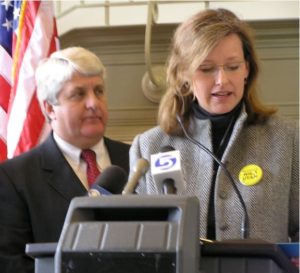 Heidi McIntosh: In 1991, armed with a law degree from Georgetown University and working on her LLM in environmental law at the University of Utah, Heidi made the interesting choice of volunteering for a lean and scrappy advocacy organization called the Southern Utah Wilderness Alliance. A few short years later she was hired as our staff attorney and went on over the next 20 years to become one of the fiercest and most well-recognized protectors of Utah’s redrock wilderness. During her career at SUWA, Heidi became a leading expert on the threats posed to western public lands by off-road vehicles and RS 2477 right-of-way claims. Among the notable cases she handled for SUWA is the suit that resulted in Canyonlands National Park closing Salt Creek Canyon to off-road vehicles. Heidi was named the Utah State Bar Energy, Natural Resources and Environment Section’s Lawyer of the Year in 2001. She is currently the managing attorney at Earthjustice’s Rocky Mountain regional office in Denver.
Heidi McIntosh: In 1991, armed with a law degree from Georgetown University and working on her LLM in environmental law at the University of Utah, Heidi made the interesting choice of volunteering for a lean and scrappy advocacy organization called the Southern Utah Wilderness Alliance. A few short years later she was hired as our staff attorney and went on over the next 20 years to become one of the fiercest and most well-recognized protectors of Utah’s redrock wilderness. During her career at SUWA, Heidi became a leading expert on the threats posed to western public lands by off-road vehicles and RS 2477 right-of-way claims. Among the notable cases she handled for SUWA is the suit that resulted in Canyonlands National Park closing Salt Creek Canyon to off-road vehicles. Heidi was named the Utah State Bar Energy, Natural Resources and Environment Section’s Lawyer of the Year in 2001. She is currently the managing attorney at Earthjustice’s Rocky Mountain regional office in Denver.
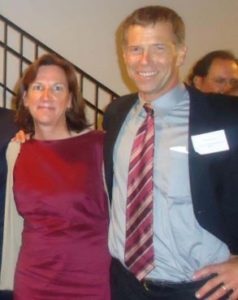 Cindy Shogan: Cindy was SUWA’s legislative director in the 1990s and a board member for some 15 years thereafter. She was instrumental in strategizing and implementing a nationwide campaign, cultivating congressional champions Maurice Hinchey and Dick Durbin, and stopping the Utah congressional delegation’s abysmal wilderness bill in the mid ‘90s. When former Utah Rep. Jim Hansen said, “those *&^%()!! at SUWA put up a tough fight,” he was talking about Cindy. Cindy has also worked for Defenders of Wildlife, the Izaak Walton League, and the Sierra Club. Following her tenure at SUWA, she served as executive director of the Alaska Wilderness League for 18 years, ending her long and successful career of defending wild places with a well-deserved retirement in 2017. She received the Wilburforce Foundation’s Conservation Leadership Award in 2003.
Cindy Shogan: Cindy was SUWA’s legislative director in the 1990s and a board member for some 15 years thereafter. She was instrumental in strategizing and implementing a nationwide campaign, cultivating congressional champions Maurice Hinchey and Dick Durbin, and stopping the Utah congressional delegation’s abysmal wilderness bill in the mid ‘90s. When former Utah Rep. Jim Hansen said, “those *&^%()!! at SUWA put up a tough fight,” he was talking about Cindy. Cindy has also worked for Defenders of Wildlife, the Izaak Walton League, and the Sierra Club. Following her tenure at SUWA, she served as executive director of the Alaska Wilderness League for 18 years, ending her long and successful career of defending wild places with a well-deserved retirement in 2017. She received the Wilburforce Foundation’s Conservation Leadership Award in 2003.
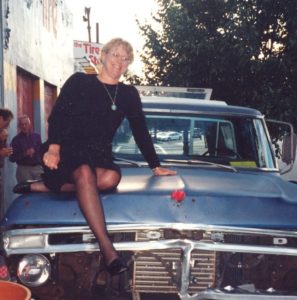 Gail Hoskisson Loper: A fifth-generation Utahn from Carbon County, Gail grew to be a passionate and indefatigable advocate for Utah’s redrock country. In addition to phone banking and stuffing envelopes at the SUWA office, she lobbied for wilderness protection in Washington, DC and helped spearhead the volunteer-led RS 2477 project—a Herculean effort to photo-document and map thousands of right-of-way claims across proposed wilderness in Utah. Gail served as co-chair and vice-chair of the Utah Wilderness Coalition for several years and joined our staff in 2000, focusing first on grassroots organizing and event planning in Utah before moving to Washington, DC to run our legislative office. After retiring to Moab and, later, Western Colorado, she passed away in 2011 following a valiant battle with cancer.
Gail Hoskisson Loper: A fifth-generation Utahn from Carbon County, Gail grew to be a passionate and indefatigable advocate for Utah’s redrock country. In addition to phone banking and stuffing envelopes at the SUWA office, she lobbied for wilderness protection in Washington, DC and helped spearhead the volunteer-led RS 2477 project—a Herculean effort to photo-document and map thousands of right-of-way claims across proposed wilderness in Utah. Gail served as co-chair and vice-chair of the Utah Wilderness Coalition for several years and joined our staff in 2000, focusing first on grassroots organizing and event planning in Utah before moving to Washington, DC to run our legislative office. After retiring to Moab and, later, Western Colorado, she passed away in 2011 following a valiant battle with cancer.
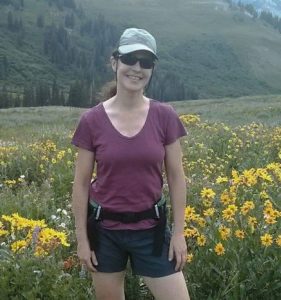 Diane Kelly: Diane joined the SUWA staff in 1996 as membership coordinator, became our publications coordinator a few years later, and ultimately assumed the title of communications specialist, employing ever-evolving tools and technologies to shepherd our print and digital outreach efforts into the 21st Century. Among other things, she is our longtime webmaster and the editor of our beloved Redrock Wilderness newsletter. SUWA’s materials always look good in large part due to her tireless efforts.
Diane Kelly: Diane joined the SUWA staff in 1996 as membership coordinator, became our publications coordinator a few years later, and ultimately assumed the title of communications specialist, employing ever-evolving tools and technologies to shepherd our print and digital outreach efforts into the 21st Century. Among other things, she is our longtime webmaster and the editor of our beloved Redrock Wilderness newsletter. SUWA’s materials always look good in large part due to her tireless efforts.
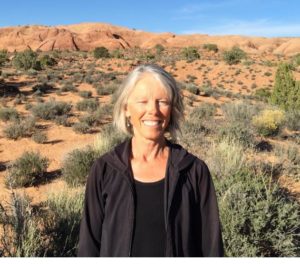 Liz Thomas: Liz grew up running a tractor on an Oklahoma farm and later graduated from the University of Colorado School of Law in 1988. With her degree in hand, she went to work for DNA-People’s Legal Services in Crown Point, NM, and Halchita, UT, representing the impoverished residents of the Navajo Nation. After serving as executive director of the Great Old Broads for Wilderness, she was hired by SUWA as a staff attorney, first in Cedar City and later in Moab, racking up an impressive 17 years of smart, relentless advocacy work . A fierce defender of the redrock, Liz is the living definition of “small but mighty.” She was our expert on off-road vehicle issues and spent long hours working to protect places like Recapture and Arch Canyons. She recently formed the Moab Area Responsible Recreation and Tourism citizens’ working group to educate tourists about responsible recreation and outdoor ethics. Since her retirement from SUWA in 2015, Liz has served on our board of directors.
Liz Thomas: Liz grew up running a tractor on an Oklahoma farm and later graduated from the University of Colorado School of Law in 1988. With her degree in hand, she went to work for DNA-People’s Legal Services in Crown Point, NM, and Halchita, UT, representing the impoverished residents of the Navajo Nation. After serving as executive director of the Great Old Broads for Wilderness, she was hired by SUWA as a staff attorney, first in Cedar City and later in Moab, racking up an impressive 17 years of smart, relentless advocacy work . A fierce defender of the redrock, Liz is the living definition of “small but mighty.” She was our expert on off-road vehicle issues and spent long hours working to protect places like Recapture and Arch Canyons. She recently formed the Moab Area Responsible Recreation and Tourism citizens’ working group to educate tourists about responsible recreation and outdoor ethics. Since her retirement from SUWA in 2015, Liz has served on our board of directors.
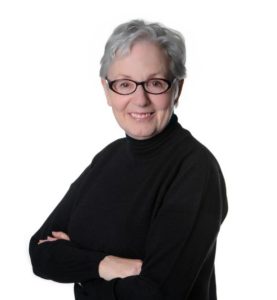 Johanna Wald: Johanna joined SUWA’s board of directors in 1999 at the height of her legal prowess as a senior attorney and Land Program director for the Natural Resources Defense Council (NRDC). She was a pioneering attorney during her 40+ year career at NRDC, where she worked tirelessly to achieve lasting protections for America’s public lands. Johanna’s expertise on all matters related to grazing and the ins and outs of the Interior Department and Bureau of Land Management kept her in high demand, as did her later work to support renewable energy. And yet she made the time to promote SUWA’s work and led NRDC to both join the Utah Wilderness Coalition and actively work alongside us to protect Utah’s redrock wilderness. Along the way she has served as a mentor and inspiration to generations of attorneys and public land advocates.
Johanna Wald: Johanna joined SUWA’s board of directors in 1999 at the height of her legal prowess as a senior attorney and Land Program director for the Natural Resources Defense Council (NRDC). She was a pioneering attorney during her 40+ year career at NRDC, where she worked tirelessly to achieve lasting protections for America’s public lands. Johanna’s expertise on all matters related to grazing and the ins and outs of the Interior Department and Bureau of Land Management kept her in high demand, as did her later work to support renewable energy. And yet she made the time to promote SUWA’s work and led NRDC to both join the Utah Wilderness Coalition and actively work alongside us to protect Utah’s redrock wilderness. Along the way she has served as a mentor and inspiration to generations of attorneys and public land advocates.
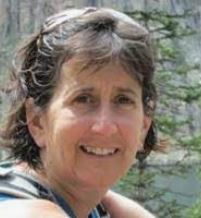 Pam Eaton: Pam is a longtime friend and advocate of Utah’s redrock wilderness. She served as the Four Corners States Regional Director for The Wilderness Society and a Utah Wilderness Coalition steering committee member from 1995-2003. A fierce defender of Utah wilderness, Pam was a steadfast ally and partner in some of our most dire legislative fights. More recently, she served on the Colorado Oil and Gas Conservation Commission and founded Green West Strategies, a consulting firm that helps clients “secure a just transition to a decarbonized electricity sector and equitable access to the benefits of conservation and renewable energy.”
Pam Eaton: Pam is a longtime friend and advocate of Utah’s redrock wilderness. She served as the Four Corners States Regional Director for The Wilderness Society and a Utah Wilderness Coalition steering committee member from 1995-2003. A fierce defender of Utah wilderness, Pam was a steadfast ally and partner in some of our most dire legislative fights. More recently, she served on the Colorado Oil and Gas Conservation Commission and founded Green West Strategies, a consulting firm that helps clients “secure a just transition to a decarbonized electricity sector and equitable access to the benefits of conservation and renewable energy.”
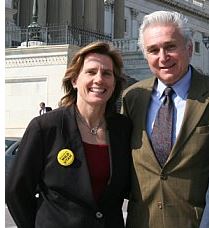 Suzanne Jones: Suzanne was the Central Rockies regional director for The Wilderness Society for 16 years and worked closely with SUWA staff on key conservation programs and strategies. Her decades of public policy experience, keen advocacy instincts, and passion for wild places helped forge an invaluable partnership. Deeply civic-minded, Suzanne served on the Boulder Colorado City Council for many years and was mayor of that city from 2015-2019. She has also worked at the National Wildlife Federation and as congressional staff for the Fisheries and Wildlife Subcommittee in the US House of Representatives. She is currently executive director of Eco-Cycle, one of the oldest and largest non-profit recyclers and Zero Waste organizations in the United States.
Suzanne Jones: Suzanne was the Central Rockies regional director for The Wilderness Society for 16 years and worked closely with SUWA staff on key conservation programs and strategies. Her decades of public policy experience, keen advocacy instincts, and passion for wild places helped forge an invaluable partnership. Deeply civic-minded, Suzanne served on the Boulder Colorado City Council for many years and was mayor of that city from 2015-2019. She has also worked at the National Wildlife Federation and as congressional staff for the Fisheries and Wildlife Subcommittee in the US House of Representatives. She is currently executive director of Eco-Cycle, one of the oldest and largest non-profit recyclers and Zero Waste organizations in the United States.
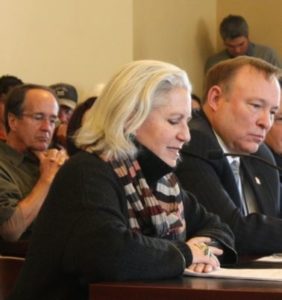 Terry Tempest Williams: Known for her writings on ecological consciousness and social change, Terry’s essays and stories are beloved worldwide. After a grueling testimony before Congress in 1995 (in front of arch wilderness foe Rep. Jim Hansen), during which she eloquently called for the protection of Utah’s remaining BLM wilderness, she co-edited Testimony: Writers Speak On Behalf of Utah Wilderness, a collection of 20 powerful essays, poems, and stories rooted in Utah’s outstanding wild places. A wordsmith who balances activist fervor with deep insight and compassion, Terry has said “I write to imagine things differently and in imagining things differently perhaps the world will change.” Her many celebrated works include Refuge: An Unnatural History of Family and Place, Red: Passion and Patience in the Desert, and Finding Beauty in a Broken World. A longtime SUWA board member, she continues to be a source of wisdom and encouragement for activists fighting for conservation and climate justice. Terry has lectured and taught at several institutions, including the University of Utah and Dartmouth College, and is currently writer-in-residence at the Harvard Divinity School.
Terry Tempest Williams: Known for her writings on ecological consciousness and social change, Terry’s essays and stories are beloved worldwide. After a grueling testimony before Congress in 1995 (in front of arch wilderness foe Rep. Jim Hansen), during which she eloquently called for the protection of Utah’s remaining BLM wilderness, she co-edited Testimony: Writers Speak On Behalf of Utah Wilderness, a collection of 20 powerful essays, poems, and stories rooted in Utah’s outstanding wild places. A wordsmith who balances activist fervor with deep insight and compassion, Terry has said “I write to imagine things differently and in imagining things differently perhaps the world will change.” Her many celebrated works include Refuge: An Unnatural History of Family and Place, Red: Passion and Patience in the Desert, and Finding Beauty in a Broken World. A longtime SUWA board member, she continues to be a source of wisdom and encouragement for activists fighting for conservation and climate justice. Terry has lectured and taught at several institutions, including the University of Utah and Dartmouth College, and is currently writer-in-residence at the Harvard Divinity School.
In honor of the women who have grown and continue to nurture the Utah wilderness movement, we wish you a happy Women’s History Month!

